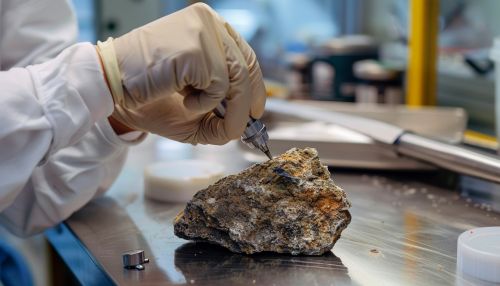Paleomagnetic studies
Introduction
Paleomagnetic studies is a scientific discipline that investigates the magnetism in rocks, sediments, or archeological materials. These studies are primarily used to understand the Earth's ancient magnetic field and its significant geological effects. This field of study is a sub-discipline of geophysics, and it provides valuable information about the Earth's plate tectonics, the geologic history of Earth, and the past locations of the continents.
History of Paleomagnetic Studies
Paleomagnetic studies have a rich history, dating back to the early 20th century. The first significant step in the development of paleomagnetism was the discovery of Earth's magnetic field reversals. This discovery was made by the French physicist Bernard Brunhes in 1906, who found that some rocks showed a reversed magnetic field.


Principles of Paleomagnetism
The fundamental principle of paleomagnetism is that certain minerals in rocks lock-in a record of the Earth's magnetic field when they form. This process, known as thermoremanent magnetization, occurs when ferromagnetic or ferrimagnetic materials, such as magnetite, cool below the Curie temperature.
Techniques in Paleomagnetic Studies
Various techniques are used in paleomagnetic studies to measure the magnetic properties of rocks, sediments, or archeological materials. These techniques include thermal and alternating field demagnetization, rock magnetic analyses, and microscopic studies of mineral grains.
Applications of Paleomagnetic Studies
Paleomagnetic studies have a wide range of applications in various fields of geology and archeology. These applications include determining the age of rocks, reconstructing the movement of tectonic plates, and studying the behavior of the Earth's magnetic field in the past.
Challenges in Paleomagnetic Studies
Despite its significant contributions to the understanding of Earth's history, paleomagnetic studies face several challenges. These challenges include the difficulty in accurately determining the age of the rock samples, the complexity of the Earth's magnetic field, and the potential for contamination during sample collection and analysis.
Future of Paleomagnetic Studies
The future of paleomagnetic studies looks promising with the advancement of technology and methodologies. The development of more accurate dating techniques, improved magnetic sensors, and the use of sophisticated statistical methods are expected to enhance the precision and reliability of paleomagnetic studies.
